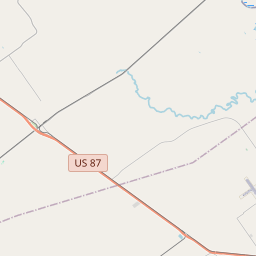Don Martin De Leon
Historical marker location:






After independence from Spain, Mexico utilized the Empresario System to settle the province of Texas with loyal citizens. Seeing his opportunity, Don Martin de Leon applied on April 8, 1824, to the provincial delegation of San Fernando de Bexar for an Empresario Grant. Just five days later, he received his grant which, of all Texas Empresarios, was second only to Stephen F. Austin’s in terms of success and helped carve the central Texas gulf coast out of the wilderness.
Don Martin de Leon was born in Cruillas, Nuevo Santander (modern-day Tamaulipas), Nueva Espana. Around 1790, he joined the military and reached the rank of captain. In 1795, he married Dona Patricia de la Garza. Between 1798 and 1801, the family moved to Texas and established the Rancho Santa Margarita near present-day San Patricio. The family experienced many difficult times during an arduous political era in Texas, even leaving the rancho to escape upheaval from the war for independence from Spain. He returned to Texas in 1814 and settled closer to La Bahia.
In 1824, his petition for an empresario grant was approved and he established Guadalupe Victoria which included people from a range of nationalities. In 1831, his colony was expanded to include most of modern Calhoun County west of Matagorda Bay. A port was established near present-day Port Lavaca on Lavaca Bay which provided the colony crucial access to trade and supplies, and established the area as a viable shipping link to future generations. Don Martin de Leon died in a cholera epidemic that swept the U.S. he is remembered as a pioneer in the settlement of the Texas gulf coast
As one of the most visible programs of the Texas Historical Commission (THC), historical markers commemorate diverse topics in Texas history, including: the history and architecture of houses, commercial and public buildings, religious congregations, and military sites; events that changed the course of local and state history; and individuals who have made lasting contributions to the state, community organizations, and businesses.
The Texas Rangers, a famous law enforcement agency, were first organized in 1835 to protect settlers from Native American attacks.
During the early 19th century, Calhoun County became a part of the Mexican state of Coahuila y Tejas. However, with the Texas Revolution in 1836, the region gained independence from Mexico and became a part of the Republic of Texas. The county was officially established in 1846 and was named after John C. Calhoun, a prominent statesman and U.S. Vice President.
The economy of Calhoun County has always been closely tied to agriculture, particularly rice and cotton farming. The presence of rich soil and a favorable climate made the region ideal for agricultural production. Later, after the construction of the Gulf Intracoastal Waterway in the early 20th century, the county's economy grew with the expansion of the fishing and shrimping industries.
One significant event in the county's history occurred in 1942 when the U.S. Army established the Matagorda Island Army Airfield. The airfield served as a training facility during World War II and trained thousands of pilots. Today, it is part of the Matagorda Island Wildlife Management Area and is a popular tourist destination.
Calhoun County's history is a testament to the resilience and adaptability of its people. The region continues to flourish, balancing its agricultural heritage with advancements in energy, tourism, and commerce, making it a vibrant and thriving community.
Calhoun County Timeline
This timeline provides a glimpse into the major events and milestones that have shaped the history of Calhoun County, Texas.
- 1832 - The area now known as Calhoun County is part of the Mexican territory of Coahuila y Tejas.
- 1836 - Texas gains independence from Mexico and Calhoun County is established as a separate entity.
- 1839 - The town of Indianola is founded and becomes a major port on the Texas coast.
- 1852 - Calhoun County is officially organized, with Indianola as its county seat.
- 1875 - A hurricane devastates Indianola, leading to the decline of the town as a major port.
- 1886 - Port Lavaca becomes the new county seat of Calhoun County.
- 1931 - The Discovery Well is drilled, leading to the discovery of oil in Calhoun County.
- 1945 - The Calhoun County Navigation District is created to oversee the development and maintenance of the Port of Port Lavaca.
- 1961 - The Texas Gulf Sulphur Company begins operations in Calhoun County, leading to a significant economic boost.
- Today - Calhoun County is a thriving coastal community with a strong economy based on industries such as petrochemicals, agriculture, and tourism.